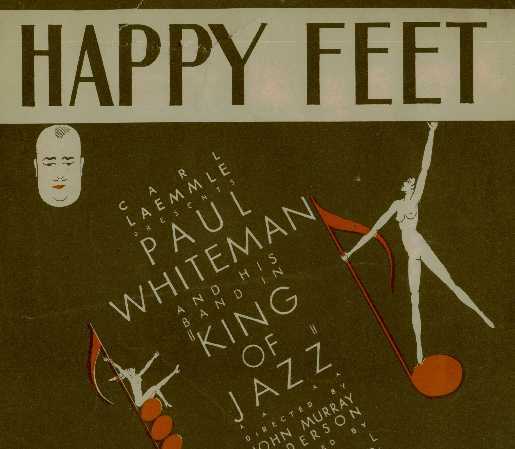
The 92Y
Lyrics and Lyricists Concert
Boom, Bust
and High Spirits
Sweepin’
the Clouds Away
Robert Kimball, artistic
director and host
Peter Yarin and
Vince Giordano, co-music
directors
A Review by
Albert Haim of the February 24, 2014 2 PM Performance
Introduction
The
late 1920s and early 1930s represented a difficult period in American
History.
Following the excesses of the early and mid-twenties (les annees folles
in
French, the crazy years), the stock market crashed in October 1929;
otherwise
law-abiding citizens defied prohibition openly; and by the mid-thirties
the
United States was in a deep recession. In spite of the serious economic
problems, musicians, composers and performers were not silent in
1929-1932, the
period represented in the 92Y Lyrics and Lyricists Concert series for
2014.
Broadway shows were successful; with the advent of sound,
The Songs
The songs performed in the concert were from 1929-1931 (with one from
1932) and
originated in Broadways shows and
Great
Day – Rose, Eiscu and Youmans – 1920, Broadway
Happy Days Are Here Again – Yellen and Ager – 1929, Hollywood
On the Sunny Side of the Street – Fields and McHugh – 1930, Broadway
Sweepin’ the Clouds Away – Coslow – 1930, Hollywood
Cheerful Little Earful – Gershwin, Rose and Warren – 1930, Broadway
Body and Soul – Heyman, Sour, Eyton and Green – 1930, Broadway
Embraceable You – Gershwin and Gershwin – 1930, Broadway
Rockin’ in Rhythm – Ellington – 1931, Recording
I Still Believe in You – Hart and Rodgers – 1930, Broadway
Memories of You – Razaf and Blake –
1930, Broadway
You’re Driving Me Crazy – Donaldson – 1930, Broadway
Puttin’ On the Ritz – Berlin – 1929,
Hollywood
I Got Rhythm – Gershwin and Gerswhin – 1930, Broadway
Ten Cents A Dance – Hart and Rodgers – 1930, Broadway
Love for Sale – Porter – 1930, Broadway
Just A Gigolo – Caesar and Casucci – 1929, Song Standard
I Happen to Like New York – Porter – 1930, Broadway
Happy Feet – Yellen and Ager – 1930, Hollywood
Get Happy – Koehler and Arlen – 1930, Broadway
Time On My Hands – Adamson, Gordon and Youmans – 1930, Broadway
My Baby Just Cares For Me – Kahn and Donaldson – 1930, Hollywood
Three Little Words – Kalmar and Ruby – 1930 Hollywood
Something to Remember You By – Dietz and Schwartz – 1930, Broadway
Mademoiselle In New Rochelle – Gershwin and Gershwin – 1930, Broadway
Life Is Just A Bowl of Cherries – Brown and Henderson – 1931, Broadway
I’ve Got Five Dollars – Hart and Rodgers – 1931, Broadway
Fine And Dandy – James and Swift – 1930, Broadway
But Not For Me – Gershwin and Gershwin = 1930, Broadway
Beyond the Blue Horizon – Robin, Whiting and Harling – 1930, Hollywood
Let’s Have Another Cup of Coffee - Berlin – 1932, Broadway
As Time Goes By – Hupfeld – 1931, Hollywood
Good Night, Sweetheart – Noble, Campbell and Connelly – 1931, Recording
Bonus,
not in the published program: Jazznocracy, Jimmie Lanceford, 1934,
Recording
You
will notice that although the show covered a very depressing period in
the history of the United States, several of the songs have optimistic
titles –
“Great Day,” “On the Sunny Side of the Street,” “Fine and Dandy.” There
were
also poignant songs such as “Ten Cents A Dance.”
The Show
The
Nighthawks and the singers were on the stage. There was a large screen
behind the orchestra. The format of the show can be described as “sight
and
sound.” As host Robert Kimball presented each number, relevant images
were
displayed on the screen as the orchestra and singers perfomormed. For
example,
when Mr. Kimball told the audience about the stock market crash, the
famous
Variety headline was displayed on the screen.


Every
song in the program was introduced by Mr. Kimball who provided highly
informative historical context and sprinkled his remarks with amusing
anecdotes.
The
show moved quite rapidly: 33 songs in about 110 minutes including
introductions. The singers were excellent, each chosen particularly for
the
type of song involved: Klea and Jason very amusing in “You’re Driving
Me Crazy,”
a dramatic rendition by
Vince
Giordano and the Nighthawks provided a superb accompaniment to the
singers: clearly in front in the instrumental numbers, modestly
standing back
when the singers were vocalizing. Vince and the Nighthawks obviously
enjoy
ultra-fast numbers, and their rousing rendition of “Jazznocracy” was
received
with wild applause by the audience.
The
music and lyrics for the songs included in the concert were written
over eighty years ago. Some might think they are passé,
antiquated. However,
thanks to the authenticity of the arrangements and the faithful
renditions by
singers and musicians, the music is as fresh and vital today as it was
when the
composers and lyricists conceived the songs. Vince Giordano’s deep
understanding of the sensibility and history of 1920s and 1930s music,
and his
passion for faithful recreations is clearly a powerful driving force
and one of
the main reasons for the great success of the show.

Photo, courtesy of the New York
Times.

Photo, courtesy
of http://ttsheldy.blogspot.com/